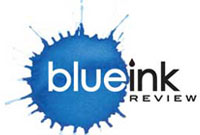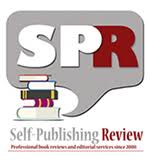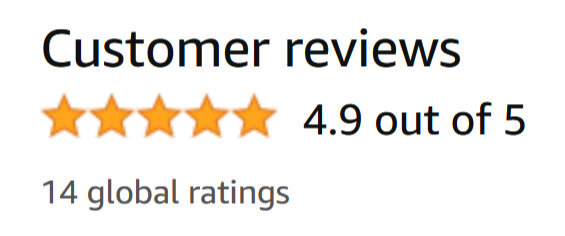Sell More Self-Published Books on Amazon with Endorsements, Editorial Reviews, & Reader Reviews
It’s exciting to publish a book. Because self-publishing is so accessible, you want to create a buzz behind your book and stand out in a crowded market. To stand out, you’ll need to signal to readers that your book is good, that it’s well-received and noteworthy, and that it’s in demand.
If you’re self-publishing a book and it’s on Amazon, you can stand out from the crowd through the power of reviews—blurbs, editorial reviews, and reader reviews—to improve your credibility, catch people’s attention, and boost your sales.
Here’s how to use endorsements, “editorial review” pull quotes, and reader reviews to sell more books.
Get and use endorsements.
Before, during, and after the time of publication, you should be looking for short testimonials—endorsements—that go on your book’s back cover and in promotional materials. Blurbs build credibility.
Ask for these “blurbs” from
the authors of similar or related books;
people who’ve offered insightful and favorable reviews of similar or related books;
connections your editor, publisher, or book coach may have.
Send a sample testimonial and a word count with your request.
It’s much easier to get blurbs from meaningful connections and acquaintances.
Get and use more endorsements that you can use in Amazon as “editorial reviews.”
Seek, and get attention from media outlets. When a blogger, magazine, journal, or newspaper reviews or praises your book, lift a quote—a “pull quote” from that mention—and, using your Amazon Author Central account, put it in the editorial reviews section.
Using pull quotes shows your book has status and is attracting attention.
Dozens of paid services provide professional, expert reviews. Libraries and book buyers often use these reviews to inform their buying decisions.
Choose carefully. Do your research (and make sure the review is likely to get noticed) before buying a paid review.
Paid review services include Kirkus Reviews, Publishers Weekly, Blue Ink Review, and Self-Publishing Review.
You can use pull quotes from these reviews in your editorial reviews section and in promotional materials.
Be advised: You will have to provide the reviewer a copy of your book 4 to 9 weeks in advance, it could cost you $200 to $600 per paid review, and you may not get a helpful or favorable review.
In most cases, if you don’t like your review, you have the option of burying it so it never sees the light of day, but you don’t get your money back.
Are paid reviews like this worth it? It depends who you ask. (Here is a helpful article about the subject.)
The first two podcasts mentioned below talk a lot more about paid review services.
Seek Amazon Reader Reviews and Ratings.
Books with more reviews and ratings fare better in the Amazon algorithm and show up higher in search results.
Readers see more reviews as a sign that a book is worth being read. Only 1 to 10 percent of readers will leave a review if unprompted. If you write a great book and ask for reviews, that percentage will increase substantially—to 10 to 20 percent or more.
A large number of reviews will motivate people to buy. When I wrote this post, this was the most-reviewed nonfiction book:
Amazon reader reviews and ratings are essential if you ever plan to do paid Amazon ads; the number of reviews (and the number of stars given) will appear in the ad! Enthusiastic and favorable reviews will likely get great results on ads.
Are you asking readers—in the back of your book or in email newsletter blasts—to rate or review your book?
Even if a reader chooses not to post a review of your book, a call-to-action to share what they thought about the book with others might prove effective in spreading the buzz about your book and attracting more readers and followers.
Any author’s goal should be to get at least 10 reviews. Here’s how one of my recently-published clients is faring at the time of my writing this:
It is slimy and wrong to seek Amazon reader reviews from paid services (which Amazon may reject anyway).
It is also counterproductive; your long-term goal is to cultivate authentic support from readers.
In addition, uninformed reviews might not help potential readers learn how or why your book is great or what’s in it for them if they buy it.
Repurpose blurbs, editorial reviews, and reader reviews.
We’ve established that advance blurbs go on your back cover and can go in the editorial reviews section of your Amazon book page. Blurbs can also be given as examples when requesting more blurbs.
Have you gotten reviews (editorial reviews) from magazines, blogs, journals, or newspapers? You can use the logos of these outlets in an “as featured in” or “reviewed in” section on your website—on the main page, the book(s) page, or the about page.
You can choose endorsements, editorial reviews, and reader reviews for use in
email newsletter announcements to encourage people to buy your book
your author press kit, to establish credibility
in the proposal for a traditionally published book
in social media posts—especially in Facebook, Instagram, or Pinterest, and
in paid Facebook ads.
Tip: Select the descriptive reader reviews that colorfully spark people’s emotions or catch their attention.
Learn from reviews
Sometimes, reviews can help you identify aspects of your book that you weren’t aware of—good and bad.
Positive reviews can give you confidence and help you sell your book.
Negative reviews may point to something you’ve missed or overlooked.
Negative reviews often say far more about the reviewer (and their state of mind) than they do about you or your writing abilities. It’s usually best to not respond at all.
Learn more about reviews
Want to learn more and get advanced strategies? I trust and highly recommend these sources:
Six Figure Authors podcast #055: Getting Reviews and Starting a Street Team/Review Crew
Show Notes | Apple Podcasts | YouTube
Kobo Writing Life podcast #208: Book Reviews and Author Branding with Melissa Dalton Martinez
Show Notes | Apple PodcastsBook Launch Show podcast #042: Asking for Blurbs
Show Notes | Apple PodcastsIf you’re a new author, have patience. It takes time and effort to get reviews from book bloggers and members of the media.
Get more eyes on your book:
Hire a book marketing coach to show you the ropes and create a personalized action plan for you
Optimize your presence on Amazon or Goodreads with author coaching






